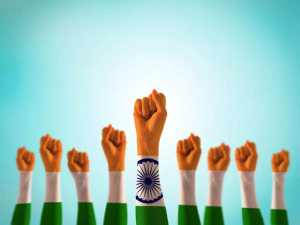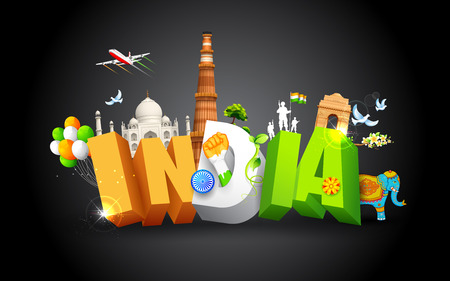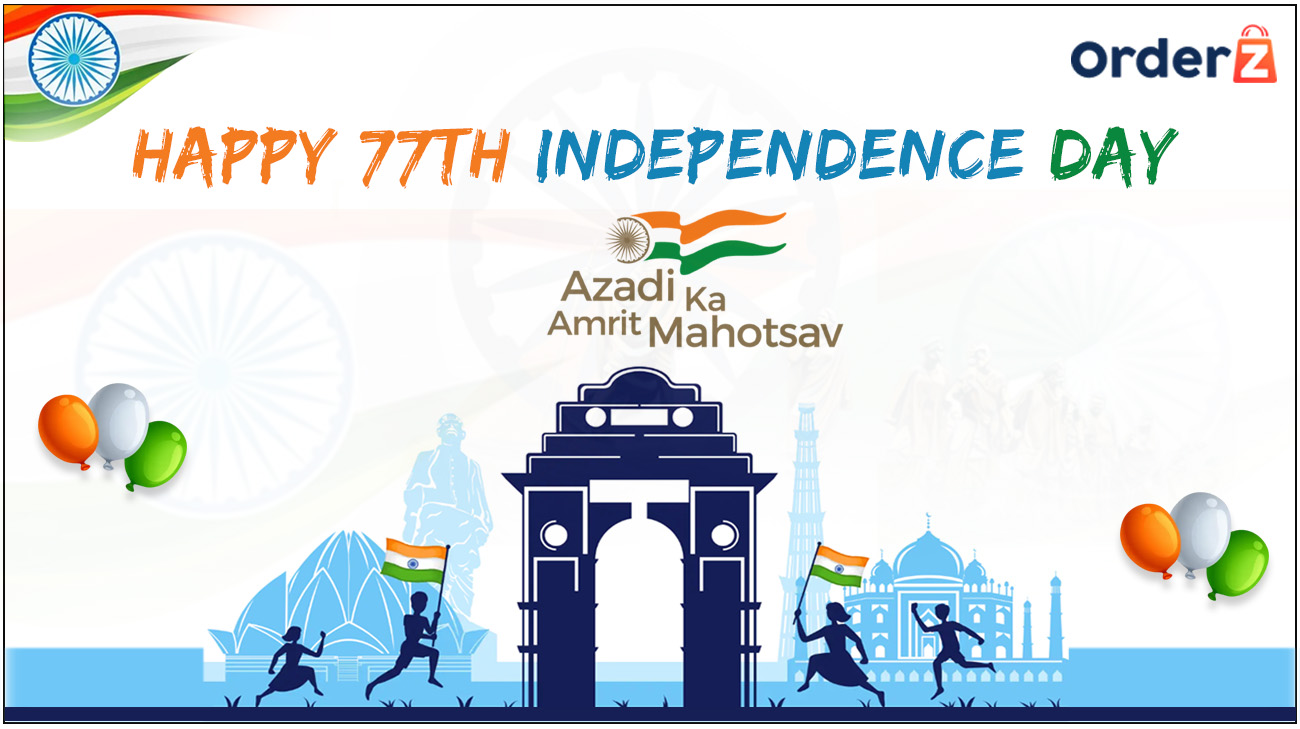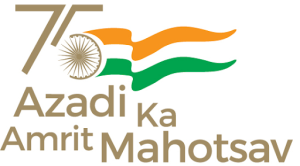India is gearing up to celebrate its 77th Independence Day annually on August 15. This holiday commemorates the sacrifices made by our freedom fighters during the war against the British Empire. August 15th has been declared as a national and gazetted holiday to commemorate our country’s independence from the British Empire.
A big salute to all
the soldiers who sacrificed
their lives for our independence!
Jai Hind!
The year 2023 holds a special significance as it marks the 77th anniversary of India’s independence and is being celebrated as “Azadi Ka Amrit Mahotsav,” a grand festival of freedom.
In this blog, we delve into the significance of this year’s celebrations and the various ways in which people across the nation are coming together to honor their past and shape a brighter future.
A Historic Milestone: Azadi Ka Amrit Mahotsav
Azadi Ka Amrit Mahotsav translates to “Festival of the Nectar of Freedom.” It signifies the completion of 75 years since India gained independence.
The celebration is not only a commemoration of the sacrifices made by freedom fighters but also a call to rejuvenate the spirit of unity, diversity, and progress. The theme for this year’s celebrations is to remember the past, cherish the present, and shape the future.
What is Azadi ka Amrit Mahotsav?
“Azadi Ka Amrit Mahotsav” is a term that translates to “Festival of the Nectar of Freedom.” It is a special initiative launched by the Government of India to commemorate the 75th anniversary of India’s independence from British colonial rule.
The initiative was launched on March 12, 2021, and it officially began on March 12, 2022, with celebrations expected to continue until August 15, 2023.
The primary purpose of Azadi Ka Amrit Mahotsav is to celebrate and remember the sacrifices made by freedom fighters and to honor the struggles and achievements of the Indian people in their journey towards independence.
The initiative aims to instill a sense of pride, patriotism, and unity among Indians and to encourage them to actively participate in shaping the future of the nation.
Key features of Azadi Ka Amrit Mahotsav include:

-
Historical Remembrance:
The initiative includes various events, exhibitions, seminars, and cultural programs that highlight the history of India’s freedom struggle and pay tribute to the leaders, activists, and ordinary citizens who contributed to the country’s independence.
-
Cultural Celebrations:
Azadi Ka Amrit Mahotsav seeks to showcase India’s rich cultural diversity through music, dance, art, and literature. Cultural programs and performances are organized to celebrate the country’s traditions and heritage.
-
Youth Involvement:
The initiative emphasizes engaging the youth of India in various activities and events that inspire them to take an active role in the nation’s development. This involves promoting innovation, entrepreneurship, and social responsibility among the younger generation.
-
Patriotic Endeavors:
People are encouraged to participate in initiatives that promote national unity, social harmony, and community welfare. This includes activities such as tree planting, cleanliness drives, and campaigns against social issues.
-
Digital Engagement:
Azadi Ka Amrit Mahotsav leverages digital platforms to engage with a wider audience. Online exhibitions, webinars, and discussions are organized to reach people across the country and even globally.
-
Pledges for the Future:
Citizens are invited to take pledges that contribute to the betterment of India. These pledges encompass various aspects such as environmental conservation, education, healthcare, and more.
Azadi Ka Amrit Mahotsav has 5 Main Themes
The Azadi Ka Amrit Mahotsav is a commemorative initiative that began on March 12th, 2021, and is set to conclude on August 15th, 2023, precisely 75 weeks before the 75th anniversary of India’s independence.
The initiative is centered around five main themes, each of which reflects a significant aspect of India’s journey towards freedom and its vision for the future. These themes are:
-
Freedom Struggle and Sacrifice:
This theme focuses on honoring the struggles and sacrifices made by the freedom fighters who played a pivotal role in India’s fight for independence. The theme aims to educate and inspire the younger generation about the dedication and commitment of those who fought against colonial rule.
-
Ideas at 75:
Under this theme, the initiative encourages discussions, debates, and dialogues on various ideas that have shaped the country’s development and progress over the years. It aims to explore the evolution of India’s values, principles, and philosophies.
-
Achievements at 75:
Celebrating the accomplishments of India’s journey since independence, this theme highlights the nation’s achievements in diverse fields such as science, technology, arts, culture, sports, and governance. It reflects on India’s growth and development on both national and international stages.
-
Actions at 75:
This theme emphasizes the importance of citizen participation and community engagement. It encourages individuals and communities to actively contribute to the betterment of society by taking actions that align with the nation’s aspirations.
-
Youth at 75:
Recognizing the role of the youth in shaping the nation’s future, this theme focuses on empowering and engaging young minds. It encourages them to take on leadership roles, drive innovation, and contribute positively to India’s progress.
Why this particular date 15th August is chosen for India’s Independence
The date of August 15th, 1947, holds significant historical and symbolic importance as the day India gained independence from British colonial rule. There are several reasons why this particular date was chosen for India’s Independence:
-
Mountbatten’s Announcement:
On June 3, 1947, Lord Louis Mountbatten, the last Viceroy of India, announced the British government’s intention to transfer power and grant independence to India. The announcement set the stage for negotiations between various political parties and leaders to determine the specifics of the transition.
-
Practical Considerations:
The process of transferring power and ensuring a smooth transition required a reasonable amount of time for administrative and logistical arrangements. August 15th allowed sufficient time for the necessary arrangements to be made.
-
Symbolic Significance:
The date of August 15th has a certain symbolism associated with it. It was on this date in 1945 that Japan had surrendered, effectively ending World War II. This date was seen as a symbol of hope and new beginnings, making it a suitable choice for India’s independence.
-
Midnight Transfer of Power:
The Indian Independence Act, which formalized the transfer of power from British rule to Indian control, was enacted on July 18, 1947. It was decided that the transfer of power would take place at the stroke of midnight, moving from August 14th to August 15th, signifying the end of British colonial rule and the birth of a sovereign India.
-
Auspiciousness:
In Indian culture, certain dates are considered auspicious for significant events. August 15th, falling in the month of August, held cultural and spiritual significance for many Indians, making it a favorable choice.
-
Historical Events:
The day August 15th had historical significance as well. It was the same day in 1945 when the “Quit India” movement was launched by the Indian National Congress, demanding an end to British rule.
Given these factors, August 15th was chosen as the day to mark India’s independence and the end of nearly 200 years of British colonial rule.
The date carries with it a sense of national pride, and it is now celebrated annually as Indian Independence Day, a day of remembrance, reflection, and celebration of the nation’s freedom and progress.
Important Facts about India

-
Geography and Demographics:
India is the seventh-largest country in the world by land area and the second-most populous country, with over 1.3 billion people.
It is located in South Asia and is bordered by Pakistan, China, Nepal, Bhutan, Bangladesh, and Myanmar.
The country has diverse landscapes, ranging from the Himalayan mountain range in the north to tropical rainforests in the south.
-
Political Structure:
India is a federal parliamentary democratic republic.
The President of India is the head of state, while the Prime Minister is the head of government.
-
Cultural Diversity:
India is known for its rich cultural heritage, with a multitude of languages, religions, and traditions.
It is home to various world-famous landmarks such as the Taj Mahal, Qutub Minar, and Jaipur’s Hawa Mahal.
-
Languages:
India is incredibly linguistically diverse, with more than 1,600 languages spoken across the country.
-
Economy:
India has one of the world’s largest economies, with a diverse range of industries including agriculture, manufacturing, services, and technology.
It’s known for its software and IT services industry, and cities like Bengaluru are often referred to as the “Silicon Valley of India.“
-
Space Exploration:
India has a successful space program, including organizations like the Indian Space Research Organisation (ISRO).
ISRO has launched numerous satellites for communication, remote sensing, and scientific research.
Chandrayaan-3 marks India’s third lunar mission and represents a second endeavor to achieve a successful soft landing on the Moon’s surface.
The mission was launched from the Satish Dhawan Space Center (SDSC) in Sriharikota on July 14, 2023, at 2:35 pm.
It comprises an indigenous Lander module (LM), Propulsion module (PM), and a Rover, all aimed at advancing the development and showcasing of innovative technologies essential for future interplanetary missions.
-
Cuisine:
Indian cuisine is famous for its diversity and flavors, ranging from spicy curries to sweet desserts like gulab jamun and jalebi.
Each region in India has its own unique culinary traditions.
-
Wildlife and Biodiversity:
India has a diverse range of wildlife, including Bengal tigers, Asian elephants, and various species of deer and birds.
The country has several national parks and wildlife sanctuaries dedicated to the conservation of its rich biodiversity.
OrderZ Celebrating India’s 77th independence day:
OrderZ.in, an e-commerce store, is excited about India’s 77th Independence Day. We’ve planned a special day to honor this occasion and show our patriotic spirit. Our whole team is joining in to mark this important event.
Enthusiastic Events: We’re hosting events that show our love for the country. These events let us express our deep connection to India’s progress.
Responsible Actions: We’ve responsibly fulfilled our duties by paying taxes. We’re dedicated to contributing to India’s economic strength.
Proud of India’s Progress: In 76 years, India has achieved a lot. Our Amrit Mahotsav of independence is a source of pride.
Let’s all join the “Har Ghar Tiranga” campaign to show our patriotism. Our national flag is a symbol of honor and should fly high.
At OrderZ, we’re pleased to celebrate Azadi Ka Amrit Mahotsav and contribute to India’s bright future. Let’s celebrate unity, progress, and patriotism together.
Happy Independence Day!!!






